What’s in a Doll?
An exhibit at the New-York Historical Society explores racial stereotypes and some hard truths through the lens of the Black doll
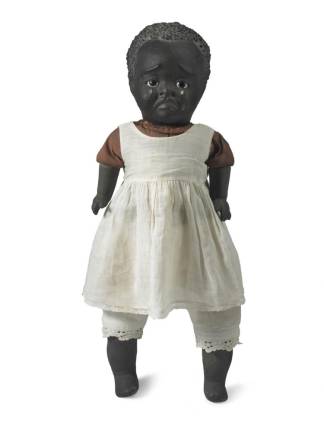
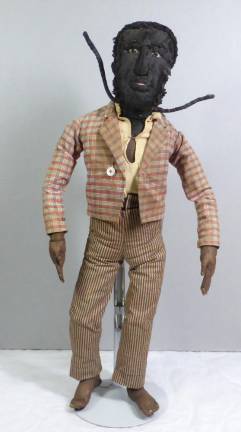
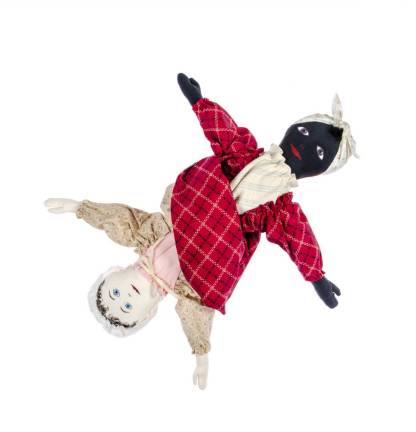
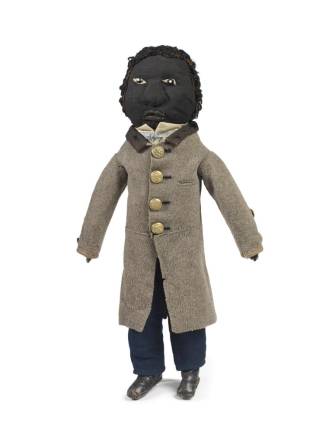
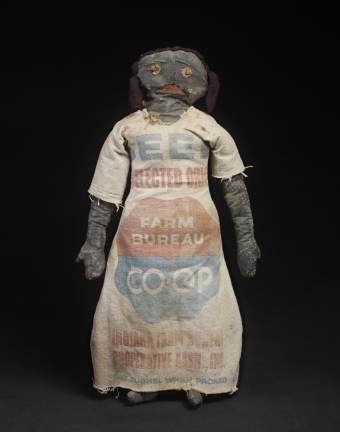
Nearly three years in the making, “Black Dolls” at the New-York Historical Society is child’s play and so much more. Drawn largely from the holdings of Deborah Neff, a Connecticut toy collector who contributed 110 handmade dolls and scads of vintage photos, the exhibit of more than 200 items is focused on cloth dolls created from the 1850s to the 1940s in the U.S., with a nod to commercially manufactured dolls in the last century, like Addy Walker, American Girl’s first Black figure.
This is the first time that the Neff collection has been exhibited in the city. The dolls, once beloved playthings belonging to Black children and white children alike, are folk art and fiber art in a museum now, but also historical artifacts that speak to extraordinary creativity and survival skills honed during the Antebellum, Civil War, Reconstruction, Jim Crow and Civil Rights eras.
As the wall text at the entrance states, “The makers ... created toys that expressed their inner lives and intangible feelings while challenging pervasive stereotypes.” The dolls, in other words, were not just cuddly toys, but many, dressed in handsome outfits — stylish bell sleeves, velvet suits, sailor suits and cutaways mirroring the fashions of the day — countered caricatures and provided uplift.
Their creators are largely unnamed and unknown, but there are some exceptions:
Harriet Jacobs, a runaway slave and author of “Incidents in the Life of a Slave Girl” (1861), who spent seven years hiding in her grandmother’s attic crawl space and later created three Black dolls (ca. 1850-60) for the daughters of her Northern white employer, writer Nathaniel Parker Willis of New York.
Cynthia Walker Hill, an abolitionist from Providence, Rhode Island, who crafted a doll with a three-pronged slave collar in silk-covered wire and made another in the likeness of Frederick Douglass (both ca. 1840-48).
Leo Moss, a handyman from Macon, Georgia, who fashioned Black dolls from factory-made white dolls, using boot dye and papier-mâché to transform features and facial expressions. In a powerful statement, two of the three dolls on view, from the early 1920s and 1930s, have tears on their cheeks.
The crafters were mostly Black women who made the dolls for their children, or for the children of the white families they served. The figures were typically passed down from generation to generation and made from scraps and leftover materials—repurposed socks, cloth, leather, metal, coconut shells, bells, buttons, ribbons, bric-a-brac, feed bags, fur, wool, plus cotton, straw and sawdust for stuffing.
Topsy-Turvy Dolls
The curators confront racially charged imagery head on and provide the requisite historical context. “The Fabric of a Stereotype” is a section devoted to deconstructing the Mammy doll (also known as Dinah) — seen here, in one period photo, standing at a child’s tea service, in apparent servitude while the white dolls are seated.
The section “Race Play” tackles the topsy-turvy doll, a two-for-one, black-or-white figure, depending on the flip of a skirt. The characters, conjoined at the waist which becomes a literal color line, gained popularity at the turn of the last century, roughly coinciding with the Supreme Court’s decision in Plessy v. Ferguson (1896) that upheld racial segregation.
“The line between black and white would soon be widespread in trains and schools, as well as stitched into a child’s toy,” one label reads.
The patent application filed in 1919 by Bertha McClelland of Walton, New York — and granted one year later — came with loaded instructions that recommended a headscarf on the Black figure, “to imitate the head of a Dinah doll,” while the flip side “may be decorated in any desired manner.”
A Black-side-up doll in red polka dot dress is accompanied by text that indicates that the white side shows more wear and tear than the reverse side, “perhaps suggesting which side was favored.” Which is maybe further evidence that children played differently with the white figure than the Black figure.
The meaning of topsy-turvy dolls is still up for debate, but one historian is cited here asking how racial equality could be achieved when “to face one is to skirt another?”
Associate curator Dominique Jean-Louis comments in a video on the Society’s website: “I think if you are used to seeing Black dolls at all, you’ve maybe seen one or two, maybe in a historic photograph. But having a collection of them all in the room, and really seeing not only the techniques but also the expressions in all of these dolls, offers a different voice from this time period. They have something to say, even though they’re quite silent.”
“Black Dolls,” at the New-York Historical Society Museum & Library, 170 Central Park West (at 77th Street); through June 5